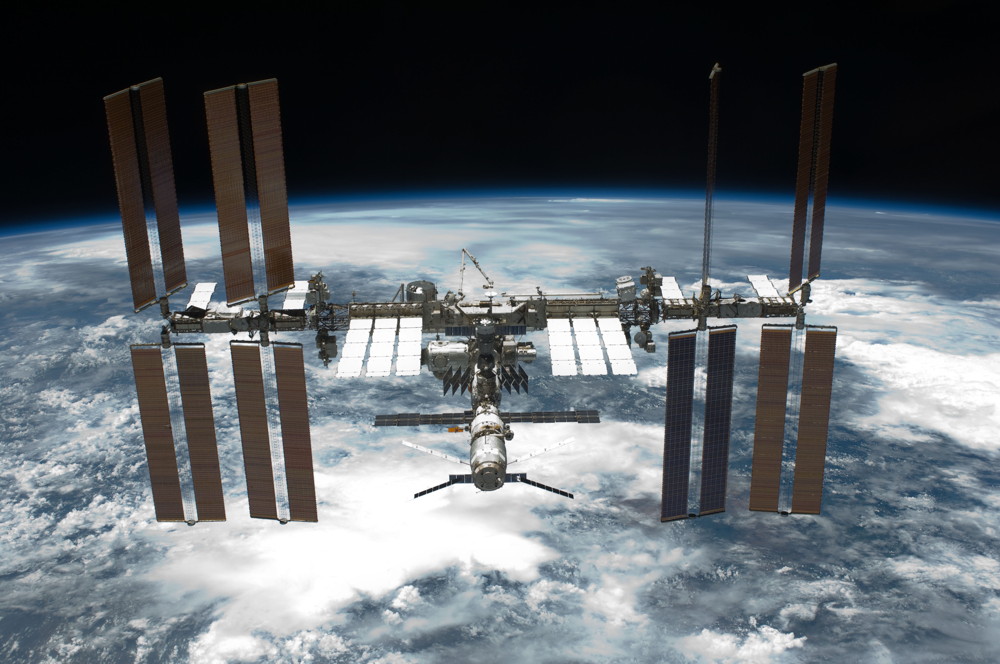Space Junk Forces Astronauts to Take Shelter in Russian Spaceships

A piece of space junk zoomed uncomfortably close by the International Space Station today (June 28), so close that the outpost's six-man crew had to take shelter in Russian space capsules in case of a collision.
The space debris made its closest approach to the space station at 8:08 a.m. EDT (1208 GMT), coming within 850 feet (260 meters) of the space station, where it posed a slim chance of hitting the station. However, the debris passed by the station without incident and the spaceflyers were able to re-enter the station after about a half hour.
"Mission Control, right after the time of closet approach, gave the crew an all-clear and told them they could back out," NASA spokesman Kelly Humphries told SPACE.com from the Johnson Space Center in Houston.
If NASA had had an earlier warning of the incoming space junk threat, Mission Control could have moved the space station out of the way by firing its thrusters or those on docked spacecraft. [Worst Space Debris Events of All Time]
"We didn't get enough advanced notice to plan a debris avoidance maneuver," Humphries said.
In this case, the best the spaceflyers could do was board two Russian Soyuz spacecraft, the vehicles they had ridden into orbit and will take back to Earth, which are parked at the station's docking ports. In the unlikely event of a collision between the debris and the outpost, the astronauts could use the Soyuz craft to make a speedy escape.
"It was a piece of unknown debris," Humphries said.
Breaking space news, the latest updates on rocket launches, skywatching events and more!
NASA does not know whether it was a spent rocket stage, a small space rock, or even a fragment from the collision of two satellites in 2009, or a 2007 Chinese anti-satellite test, which both contributed a significant amount of space junk to orbit.
The last time astronauts had to take shelter on Soyuz spacecraft to avoid space debris was in March 2009.
Russian cosmonaut Andrey Borisenko is commanding the International Space Station's current Expedition 28 mission. Serving with him are flight engineers Alexander Samokutyaev and Sergei Volkov of Russia, NASA astronauts Mike Fossum and Ron Garan, and Japanese Aerospace Exploration Agency astronaut Satoshi Furukawa.
Each of the space station crewmembers plans to spend between five to six months aboard the orbiting lab. They are preparing for the arrival of NASA's final space shuttle mission, STS-135 aboard Atlantis, which will launch toward the station on July 8.
Follow SPACE.com for the latest in space science and exploration news on Twitter @Spacedotcom and on Facebook.

Clara Moskowitz is a science and space writer who joined the Space.com team in 2008 and served as Assistant Managing Editor from 2011 to 2013. Clara has a bachelor's degree in astronomy and physics from Wesleyan University, and a graduate certificate in science writing from the University of California, Santa Cruz. She covers everything from astronomy to human spaceflight and once aced a NASTAR suborbital spaceflight training program for space missions. Clara is currently Associate Editor of Scientific American. To see her latest project is, follow Clara on Twitter.
